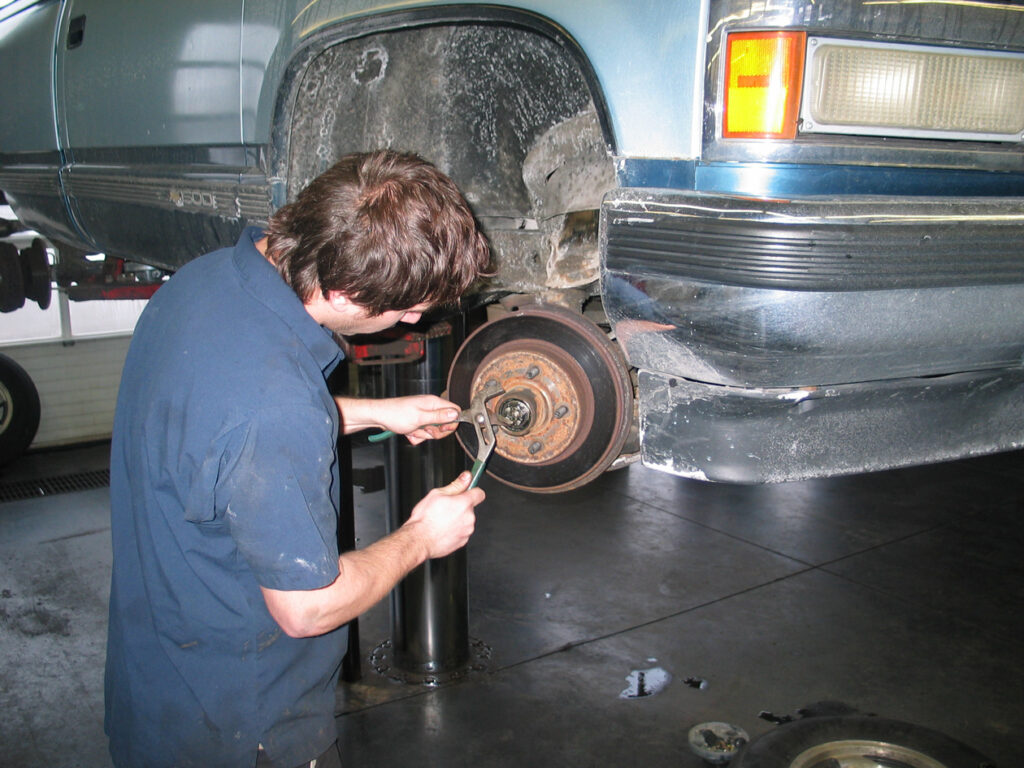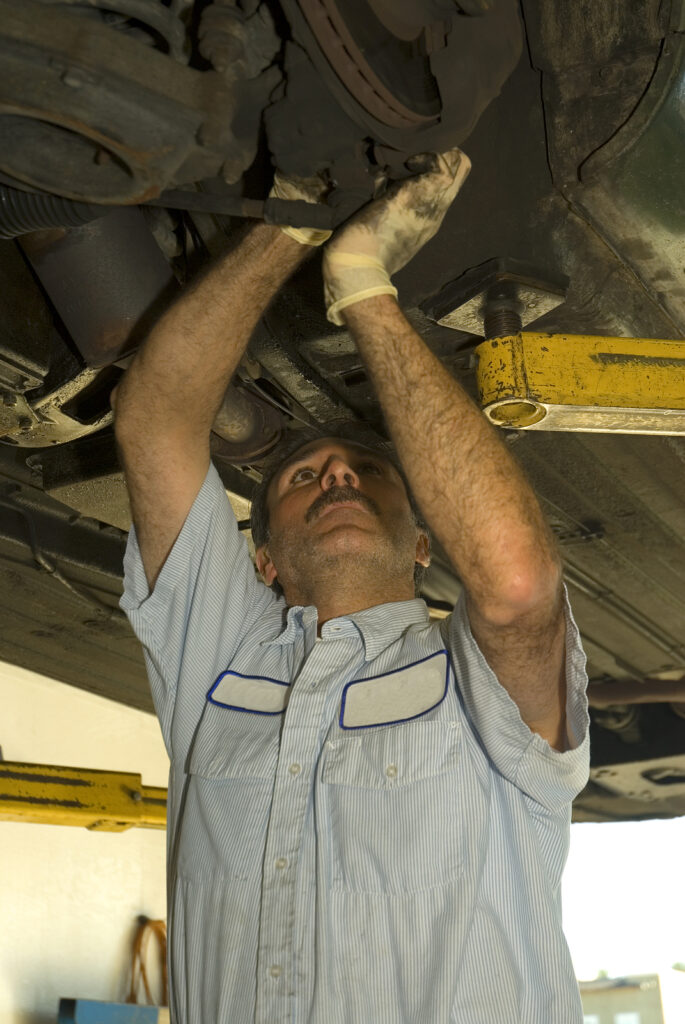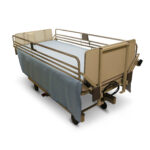Setting up a DIY repair shop in your garage can be a highly rewarding and cost-effective venture. Whether you're a seasoned DIY enthusiast or a novice looking to get started, establishing a well-equipped and organized workspace is essential for both efficiency and safety. In this comprehensive guide, we'll delve deep into the crucial aspects of creating your own DIY repair shop, from assessing your space to acquiring essential tools and equipment, and finally, optimizing your garage setup for maximum efficiency.
DIY Repair Shop Assessing Your Space
Before you start transforming your garage into a DIY repair shop, it's essential to take the time to assess your available space and make the necessary preparations.
Garage Size and Layout
Begin by measuring the dimensions of your garage to determine the exact working area you have at your disposal. Consider not only the square footage but also the layout. Are there any obstructions, such as support columns, that may affect your workspace?
Next, think about the layout of your garage. Depending on your needs, you may want to allocate specific areas for different purposes. For instance:
- Tool Storage Area: This should be easily accessible and well-organized.
- Workbench: Ensure you have sufficient space for a sturdy workbench where you'll perform most of your tasks.
- Vehicle Workspace: If you plan on doing automotive repairs, designate an area for this purpose.
Additionally, evaluate the current state of your garage's ventilation and lighting. Adequate ventilation is crucial to dissipate fumes, especially if you'll be working with paints or solvents. Proper lighting is equally important for visibility, so consider upgrading to brighter, energy-efficient LED lights to create a well-lit and comfortable working environment.
Organizing and Cleaning
Now that you've assessed your space, it's time to declutter and clean your garage thoroughly. This step is essential because a cluttered and dirty workspace can be both frustrating and unsafe.
Start by removing all unnecessary items from your garage. Sort through your belongings and decide what to keep, what to donate or sell, and what to dispose of properly. Clear out any broken or unused items that are taking up valuable space.
Once you've decluttered, give your garage a thorough cleaning. Sweep the floors, dust surfaces, and consider pressure washing the walls and floors if they are particularly dirty. A clean workspace not only looks better but also makes it easier to spot tools and materials when you need them.

Essential Tools and Equipment
Now that your workspace is ready, it's time to focus on the tools and equipment that are essential for a fully functional DIY repair shop.
Hand Tools
Hand tools are the foundation of any DIY repair shop, allowing you to perform a wide range of tasks with precision and control. Here's a closer look at some of the must-have hand tools:
- Screwdrivers: Invest in a variety of screwdrivers, including both flathead and Phillips-head, in different sizes. These versatile tools are essential for tasks like assembling furniture, tightening loose screws, and more.
- Wrenches: A comprehensive set of wrenches, including combination wrenches and adjustable wrenches, is essential for various applications. Additionally, consider a high-quality socket wrench set for added versatility.
- Pliers: Pliers come in various types, such as needle-nose, slip-joint, and locking pliers. Each type serves specific purposes, from gripping and bending to cutting and holding.
- Hammer: A claw hammer is a fundamental tool for driving and removing nails, as well as other general tasks. Ensure that it's comfortable to hold and has a good balance.
- Measuring Tools: Accurate measurements are crucial in DIY projects. Invest in a quality tape measure, rulers, and carpenter's squares to ensure your work is precise.
- Utility Knife: Utility knives are versatile tools used for cutting various materials like cardboard, insulation, and more. Look for one with a retractable blade for safety and convenience.
- Chisels: Chisels are essential for woodworking projects, allowing you to carve and shape wood with precision. Consider different sizes and types for versatility in your projects.
Power Tools
Power tools can significantly enhance your productivity and make many tasks easier. Here's a detailed breakdown of some essential power tools for your DIY repair shop:
- Cordless Drill: A cordless drill is one of the most versatile power tools you can own. It's ideal for drilling holes, driving screws, and even mixing paint or adhesive with the appropriate attachments.
- Circular Saw: If you plan on cutting plywood, lumber, or other materials for woodworking or construction projects, a circular saw is indispensable. Look for one with adjustable depth and bevel settings for versatility.
- Jigsaw: When it comes to making intricate curved cuts in wood, plastic, or metal, a jigsaw is the go-to tool. It's particularly handy for tasks like cutting out sink openings in countertops.
- Miter Saw: For precise angle cuts in wood or other materials, a miter saw is essential. This tool is often used for framing, molding, and trim work.
- Router: If you want to add decorative edges or profiles to your woodworking projects, a router is a must-have tool. It allows you to create professional-looking finishes and designs.
- Angle Grinder: An angle grinder is a versatile tool for cutting, grinding, and polishing metal, stone, and other materials. It's essential for tasks like metal fabrication and rust removal.
- Table Saw: If you have ample space and plan on tackling larger woodworking projects, a table saw is a valuable addition. It provides precision and power for cutting large sheets of wood.
- Air Compressor: An air compressor is essential if you plan on using pneumatic tools such as nail guns, staple guns, and paint sprayers. Make sure to choose a compressor that suits the air requirements of your tools.
Automotive Tools
If you intend to use your DIY repair shop for automotive repairs, there are specific tools and equipment you'll need to consider:
- Jack and Jack Stands: These are essential for safely lifting and supporting vehicles. Make sure to choose ones that can handle the weight of your vehicle.
- Mechanic's Tool Set: A comprehensive set of mechanic's tools, including various sockets, ratchets, and wrenches, is essential for automotive repairs. Look for sets that cover both metric and standard measurements.
- Oil Drain Pan: If you plan on changing oil and fluids in your vehicles, you'll need a reliable oil drain pan to catch and dispose of used fluids properly.
- Diagnostic Scanner: Modern vehicles often come with complex computer systems. A diagnostic scanner allows you to read error codes and troubleshoot issues effectively.
- Creeper: A creeper is a low-profile wheeled platform that allows you to comfortably access the underside of vehicles. It's a must-have for working on cars and trucks.
Safety Equipment
Safety should always be a top priority in your DIY repair shop. To protect yourself from potential hazards, be sure to invest in the following safety gear:
- Safety Glasses: Protect your eyes from flying debris, dust, and sparks. Ensure that the safety glasses you choose meet ANSI safety standards for impact resistance.
- Hearing Protection: Many power tools can generate high levels of noise, which can be damaging to your hearing over time. Earplugs or earmuffs can help reduce noise exposure.
- Dust Masks or Respirators: When working with materials that produce dust or fumes, such as wood, drywall, or paints, it's essential to wear a dust mask or respirator to protect your respiratory system.
- Work Gloves: High-quality work gloves provide protection for your hands against cuts, abrasions, and punctures. Choose gloves that are appropriate for the specific tasks you'll be performing.
- Fire Extinguisher: Accidents can happen, so it's wise to have a fire extinguisher on hand in your garage. Ensure that it's rated for the types of fires common in a workshop setting.
- First Aid Kit: Accidents, no matter how small, can occur when working with tools and equipment. Having a well-stocked first aid kit in your workspace allows you to address minor injuries promptly.
Tool Storage and Organization
To keep your workspace efficient and clutter-free, invest in quality tool storage and organization solutions. Properly storing your tools not only makes them easy to find but also prolongs their lifespan. Consider the following options:
- Tool Chests: A sturdy tool chest with multiple drawers is ideal for organizing and protecting your hand tools. Look for chests with ball-bearing drawer slides for smooth operation.
- Cabinets and Shelves: Wall-mounted cabinets and shelves are excellent for storing larger tools, power tools, and materials. They help keep your workspace clear and organized.
- Pegboards: Pegboards are versatile for storing frequently used tools and accessories. Install them above your workbench for easy access to commonly used items.
- Tool Racks and Hooks: Use magnetic strips, tool racks, and hooks to hang and display your tools. This not only keeps them within arm's reach but also adds a visual element to your workspace.
- Tool Bags and Totes: Consider portable tool bags or totes for carrying tools to different areas of your garage or even off-site for projects.
With proper tool storage and organization, you'll be able to maintain a clean and efficient workspace, reducing the time spent searching for tools and increasing your overall productivity.

Garage Setup and Organization Tips
With your tools and equipment in order, it's time to focus on optimizing your garage setup to create an efficient and comfortable workspace.
Workbench and Workspace
Your workbench is the heart of your DIY repair shop. It's where you'll spend most of your time working on projects, so it's essential to set it up correctly:
- Sturdy Workbench: Invest in a high-quality workbench that can withstand heavy use and provide a stable surface for various tasks. Consider one with built-in storage options for added convenience.
- Proper Lighting: Adequate lighting is crucial for working safely and effectively. Install bright LED lights above your workbench to ensure excellent visibility.
- Tool Organization: Keep frequently used tools within easy reach of your workbench. Pegboards, magnetic strips, and tool racks are great options for organizing your tools.
Tool Storage
Effective tool storage is key to maintaining a clean and organized workspace. Here are some tips for efficient tool storage:
- Categorize Tools: Organize your tools by type and size. Create designated areas for hand tools, power tools, automotive tools, and gardening tools, if applicable.
- Label Drawers and Containers: Labeling drawers, cabinets, and storage containers makes it easy to find and return tools to their proper places.
- Shadow Boards: Consider creating shadow boards for your most frequently used hand tools. These boards have outlines of your tools, making it easy to see if something is missing.
- Tool Inventory: Maintain an inventory of your tools to keep track of what you have and what you may need to replace or upgrade.
Safety and Comfort
Your garage workspace should be safe and comfortable. Here are some measures to ensure your well-being:
- Safety Equipment Access: Ensure that safety equipment, such as fire extinguishers, first aid kits, and eye wash stations, is easily accessible and well-maintained.
- Ventilation and Climate Control: Proper ventilation is essential, especially when working with paints, solvents, or chemicals. Consider installing exhaust fans or a ventilation system. Additionally, insulate your garage and install heating or cooling options for comfort during extreme weather.
- Emergency Exits: Keep emergency exits clear and easily accessible. In case of a fire or other emergencies, you should be able to exit your workspace swiftly and safely.
Workspace Layout
Efficient workspace layout can significantly impact your productivity. Here are some layout considerations:
- Logical Arrangement: Organize your workspace logically, placing tools and equipment where they are needed most. For instance, keep automotive tools near the vehicle workspace.
- Clear Pathways: Ensure that there are clear pathways to move around your garage safely. Avoid cluttering the floor with tools or materials.
- Vehicle Workspace: If you plan to work on vehicles, leave enough space around the vehicle to maneuver comfortably. Jacks and jack stands should be readily accessible.
Electrical Setup
A well-planned electrical setup is essential to power your tools and equipment safely. Here's what you should consider:
- Adequate Outlets: Install enough power outlets to accommodate your tools without overloading circuits. You don't want to constantly trip breakers.
- Dedicated Circuits: High-powered tools like table saws or air compressors may require dedicated circuits. Consult with an electrician to ensure proper wiring and safety.
- Code Compliance: Ensure that all electrical work in your garage is up to code and safe. This includes proper grounding, GFCI outlets in wet areas, and adherence to local electrical regulations.
DIY Repair Shop FAQs
1. What is a DIY repair shop?
A DIY repair shop, short for “Do-It-Yourself repair shop,” is a dedicated space in your garage or workspace where you can perform various home improvement, automotive, or general repair tasks independently. It typically includes a collection of tools and equipment to facilitate these tasks.
2. Can I set up a DIY repair shop in my garage?
Yes, you can set up a DIY repair shop in your garage, provided you have enough space and the necessary tools and equipment. Careful planning, organization, and safety precautions are essential to create an efficient and functional workspace.
3. What tools are essential for a DIY repair shop?
Essential tools for a DIY repair shop include hand tools such as screwdrivers, wrenches, pliers, hammers, measuring tools, utility knives, and chisels. Power tools like cordless drills, circular saws, jigsaws, and routers are also crucial. Automotive enthusiasts may need specialized tools like jacks, jack stands, and diagnostic scanners.
4. How should I organize my tools in a DIY repair shop?
To keep your tools organized, categorize them by type and size. Use tool chests, cabinets, pegboards, and shelves to store tools and label drawers or containers for easy identification. Create a logical arrangement where frequently used tools are easily accessible.
5. What safety measures should I take in my DIY repair shop?
Safety should be a top priority in your DIY repair shop. Always wear appropriate safety gear such as safety glasses, hearing protection, dust masks, and work gloves. Install fire extinguishers, smoke detectors, and first aid kits. Ensure proper ventilation and comply with electrical safety codes.
6. Can I work on vehicles in my DIY repair shop?
Yes, you can work on vehicles in your DIY repair shop if you have the necessary tools and equipment. You'll need a jack and jack stands, a mechanic's tool set, an oil drain pan, a diagnostic scanner, and a creeper. Ensure you have sufficient space and take safety precautions when working on vehicles.
Conclusion
Creating your own DIY repair shop in your garage can be an incredibly rewarding experience. It provides you with the freedom to tackle a wide range of projects on your terms while saving money and learning new skills. By carefully assessing your space, acquiring the right tools and equipment, and optimizing your garage setup for safety and efficiency, you can establish a DIY repair shop that will serve you well for years to come.
Remember, safety should always be your top priority. Invest in the necessary safety gear and follow best practices when working with tools and equipment. With the right tools, organization, and workspace setup, you'll be well on your way to becoming a proficient DIY enthusiast.
Sources
https://www.ncbi.nlm.nih.gov/pmc/articles/PMC4083523/
https://consumer.ftc.gov/articles/0211-auto-repair-basics
https://transportation.wv.gov/highways/training/TrainingDocuments/Crawfords_Auto_Repair_Guide.pdf




